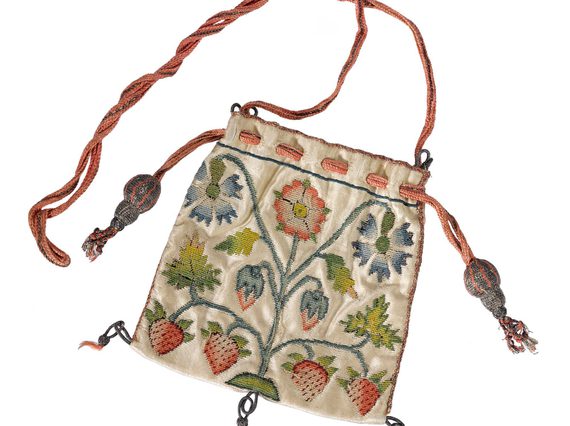
Understanding colour in Renaissance embroidery: new analytical approaches
Last updated: 8 February 2022
About the research
National Museums Scotland's internationally significant collection of European textiles and dress is 50,000 objects strong, dating from the 14th century to the present day, and is the third largest in the UK after the V&A and the Bath Fashion Museum. Despite the significance of workshop production in England and Scotland to textile scholars, very little art historical research has been undertaken.
At the heart of this collection is an outstanding group of over 30 Scottish and English embroideries dating from the mid-16th to the late-17th century. Its quality and breadth, as well as the techniques represented, make this collection of national significance. This project will seek to answer key questions about the manufacture of Scottish and English embroideries in the national collection, the raw materials and dyestuffs used and their relationship to continental European examples. The development of non-destructive analytical platforms (e.g., direct desorptive MS techniques such as Matrix-Assisted Laser Desorption Electrospray Ionization (MALDESI)) which will underpin this study, is essential for the future scientific analysis of museum collections. This project will bring fundamental progress to both the heritage science community and the field of historical textile analysis.
- Project title
Understanding colour in Renaissance embroidery: new analytical approaches
- Student
Edith Sandstroem
- Project active
2018 - present
- Funder
AHRC Scottish Cultural Heritage Consortium (SCHC) – Collaborative Doctoral Partnership
- University Supervisors
Professor Alison Hulme - University of Edinburgh School of Chemistry
- National Museums Scotland Supervisor
Dr Lore Troalen - Collections Services, and Helen Wylde - Global Arts, Cultures and Design
- Research theme
Scotland's Material Heritage
Project contact
Dr Lore Troalen
Lead image: Square purse of white satin with petit point embroidery in coloured silks, and lined in pink silk: English, early 17th century.